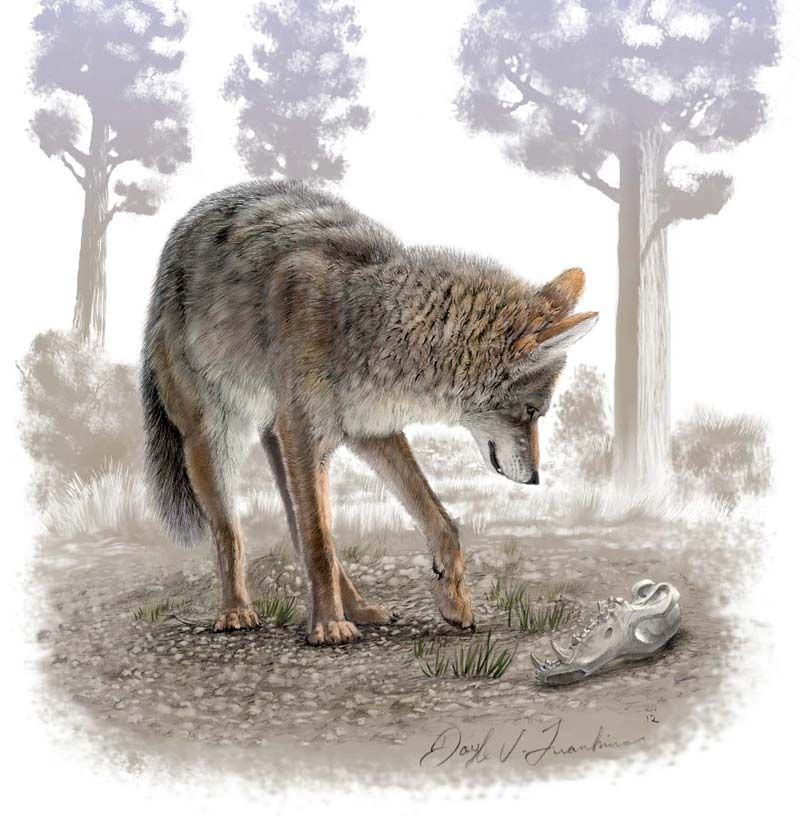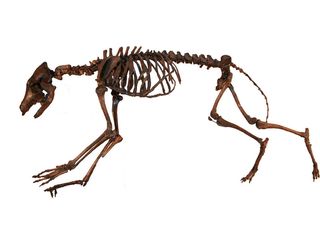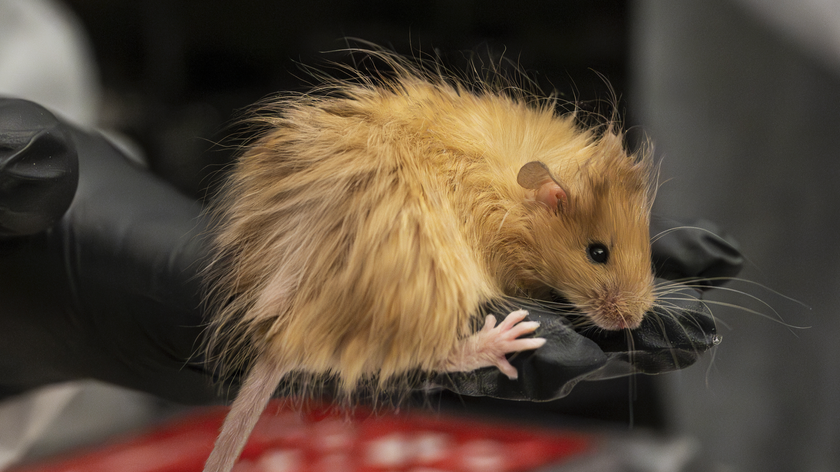How Coyotes Dwindled to Their Modern Size

In ancient times, when woolly mammoths and cave bears roamed Earth, coyotes boasted bigger bodies, rivaling the size of wolves, only to shrink to near modern size about the same time these megafauna went extinct.
Now researchers say the coyotes lost their robust bodies, along with facial features that made them better at shredding meat and taking down larger prey, because their meaty fare changed from young horses, for instance, to smaller rodents and rabbits, and hefty competitors such as dire wolves went extinct.
In the Pleistocene, the epoch spanning from about 2.6 million to 11,700 years ago right before written history, now-extinct giant animals or megafauna populated the Earth. Coyotes were significantly different in the Pleistocene, with thicker skulls and jaws as well as wider snouts and teeth.
"Coyotes in the Pleistocene probably hunted juvenile horses, juvenile llamas, juvenile camels and possibly juvenile bison," said researcher Julie Meachen, a paleontologist at the National Evolutionary Synthesis Center in Durham, N.C. "We think there was probably more pack-hunting among coyotes in the Pleistocene than there is today. Coyotes are the third most common fossil at tar pits, so they were probably in groups hunting — maybe not extensive packs, but four to six individuals, as a guess."
It was uncertain as to why coyotes transformed after the Pleistocene. The planet was often significantly icier back then, suggesting that a change in climate might be involved, but other factors might be responsible instead.
"A lot of big mammals went extinct at the end of the Pleistocene, but I was interested in the ones that didn't go extinct, that lived through it," Meachen said. "I wanted to know if they were impacted in any way, and how."

To see why coyotes might have shrunk, researchers analyzed 140 or so bones from the modern coyote (Canis latrans) and Pleistocene coyote (Canis latrans orcutti) from about 30 different sites across the continental United States ranging across 40,000 years. Their aim was to see when coyotes began changing in order to find out what else was happening then.
Sign up for the Live Science daily newsletter now
Get the world’s most fascinating discoveries delivered straight to your inbox.
Modern coyotes range in weight between 15 and 46 pounds (7 and 21 kilograms), averaging at 33 lbs. (15 kg). In contrast, the ancient coyotes are estimated to have an average mass of about 39 to 46 lbs. (18 to 21 kg).
"That's at the high end of modern coyotes today, and begins to come near the mass of living gray wolves," Meachen said. Modern gray wolves range between 50 and 176 lbs. (23 and 80 kg), averaging at 112 lbs. (51 kg). [Gallery: The World's Biggest Beasts]
The researchers saw that coyotes began changing in size at the end of the Pleistocene about 11,000 years ago, when many species of megafauna began going extinct and the climate altered dramatically. "We could actually see evolution in a relatively large mammal in a relatively small amount of time, just 1,000 years or so," Meachen said.
The scientists found no relationship between coyote body size and average annual coldest temperature, suggesting that climate change was not behind their shift in size. As such, megafaunal extinctions seem to be why coyotes shrunk over time.
"We think they got smaller as a whole because they didn't have the large mammal prey base anymore, and they didn't have the same competitors they use to have," Meachen told LiveScience. "They were no longer competing against some really big wolves, the dire wolves, and a lot of big prey were missing from their ecosystems, so their best sources of food were now rabbits and rodents."
"It's very rare to see species interactions in the fossil record," Meachen added. "Here we can see changes happening that are apparently in response to species interactions."
Future research could investigate genes from ancient and modern coyote bones to see how genetic changes matched up with skeletal ones. "Natural Trap Cave in Wyoming, which has fossil deposits spanning roughly 50,000 years, never gets above 45 degrees F (7 degrees C), so it's a good place to preserve and look for ancient DNA," Meachen said.
Meachen and her colleague Joshua Samuels detailed their findings online Feb. 27 in the journal Proceedings of the National Academy of Sciences.
Follow LiveScience for the latest in science news and discoveries on Twitter @livescience and on Facebook.












